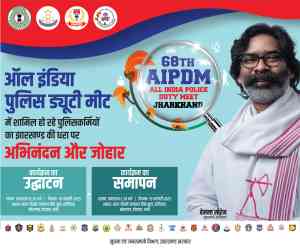
SUBHASH MISHRA
Dhanbad Dec 1: The world may have become aware about skill of ‘rat-hole’ miners after the Uttrakhand Silkyara tunnel incident, but they are household famous in Jharkhand and better known as ‘Malkatta’ in the coal industry.
Ironically, they are now recognized for wrong reasons i.e. illegal mining.
Coal industry backbone
These ‘Malkattas’ (Rat-hole miners) were considered backbone of the underground coal mines before the use of advance machines in mining. According to a mining Sardar of a mines in Bharat Coking Coal Limited (BCCL), one ‘Malkatta’ generally mines one tonne of coal in narrow mines in one hour.

These ‘Malkattas’ of coal mines were either sent to work in open cast mines or retrenched after advance technology was used in coal mining.
It was learnt that some of the ‘Malkattas’, thrown jobless, joined the syndicate of illegal mining in abandoned mines of Coal India Limited (CIL) for their survival.
“It was a primitive technique to dig coal and a quite prevalent in Meghalaya. In fact it is basically done by individual skilled miner in coal belt and normally not acceptable in mining technique these day,” said Dr Pramod Pathak, retired professor of IIT Indian School of Mines (ISM) Dhanbad.
Women and children are rat-hole experts
In Dhanbad, even women and children of a Basti near coal mines are considered ‘rat-hole’ experts who sometimes die in illegal mining. They use traditional tools of shovel, hammer, Gaita and other equipment for mining in a tunnel daily in hard and abandoned mines.
Kamal Bauri, a Malkatta in Shyampur B Colliery of Mugma Area Easter Coalfield Limited (ECL), said a rat-hole miner used to mine at least one tone of coal in one hour through a ‘rat-hole in underground mines.
“Skilled Malkatta of UP and Bihar sometimes mined one and half tonne coal in one hour with traditional tools even if mines was solid,” he said. Kamal Bauri has been shifted in coal loading work.
Also read: Jamshedpur FC head coach Scott Cooper says attacking needs improvement
Basudeo Mandal (name changed), a resident of Katras in Baghmara block, who is a rat-hole expert in illegal mining claimed that the colliery area residents of Dhanbad would have dug out all 41 trapped labours from Uttrakhand Silkyara tunnel in a few hours with traditional small tools, had they been engaged in the rescue operation. Colliery based basti residents are skilled enough to cut coal rock in minutes,” he said.
Notably, the rat-hole miners, a team of seven, were able to dig over 10 meters (till the end) within 48 hours at the Silkyara tunnel in Uttarkashi, when all the efforts since November 12 including the use of a highly sophisticated augur machine, failed to rescue 41 workers trapped inside Uttarkashi’s collapsed Silkyara-Barkot.
Rat-hole miners are experts in extracting coal from narrow and horizontal mines. Rat-hole miners dig a narrow pit, of three to four feet, just large enough for one person to descend and extract coal. They use tools such as pickaxes,
Rat-hole mining was banned in 2014
Rat-hole mining was banned in 2014 by the Meghalaya government. The temporary ban by the National Green Tribunal (NGT) was imposed after a tragic incident in 2012 when 30 coal labourers were trapped inside a mine, leading to the loss of 15 lives.
Subsequently, the Guwahati High Court, Shillong Bench, took charge, and the matter was later transferred to the NGT.
In a pivotal directive in April 2014, the NGT ordered the State of Meghalaya to cease all illegal rat-hole mining activities across the state, recognizing the severe environmental repercussions of this unregulated practice.


